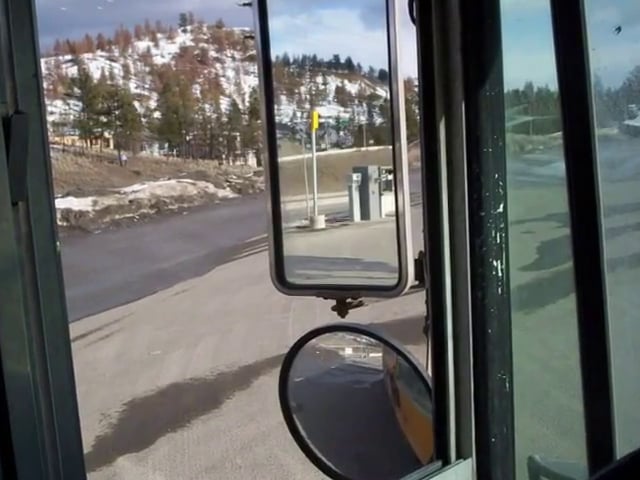The model of the school bus in the video is a 2007 pusher ER Saf T Liner. Thomas did good with the design of this one. It drives like a Cadillac and is nice and quiet up front for the operator. Most of the drivers liked these models for that reason. They handle very well with all the weight on the drive axle and a soft suspension creating a nice ride.
Note: I threw a few shots of an International DT 466 Diesel just for some variety 🙂
This particular bus has gone to auction and is the last of our Cat 3116 diesel engine models. The 3116 was a 250 hp inline 6 design. They had a fuel rack injection system which required a special tool kit for all the adjustments. The adjustments included the fuel setting, synchronization and injection timing. The valve set was the only procedure that didn’t have to have special tools but the Cat tool kit supplied the feeler gauges anyway.
A few of these engines failed on us with a dropped valve usually #5 exhaust. The valves were fused at the bottom of the stem and fatigue took it’s toll. They had to be adjusted regularily and the engine itself had to be monitored for overheating. This aggravated the problem and we wired in an over ride for the engine fan to help the cooling system out so the operator could control it from the cab.
There was only one exhaust and one intake valve per cylinder which was odd since most diesels have 2 valves each. The bottom end of these engines were strong along with a 2 piece piston. The head would have to be replaced if a valve failed along with the piston and possibly the cylinder liner.
This engine is a dry liner design so the engine would need to be pulled and stripped down then sent to a machine shop to have the liner replaced. This was one of the disadvantages of these models because they could not be in-framed saving a lot of down time. There was also a jig you would need while boring these engines to prevent warpage.
Another thing to know about the 3116 is when replacing injectors you need an injector hold down tool. This seats the injector to the brass cup in the bore of the head so there is no compression bypass during operation. This will cause an air in fuel condition and the engine will run badly.
We are going with conventional buses now because of the difference in cost to purchase and maintenance/parts requirements for the pusher model. We still have several pushers in the fleet but in the coming years we will have nothing but conventional school buses running around.







